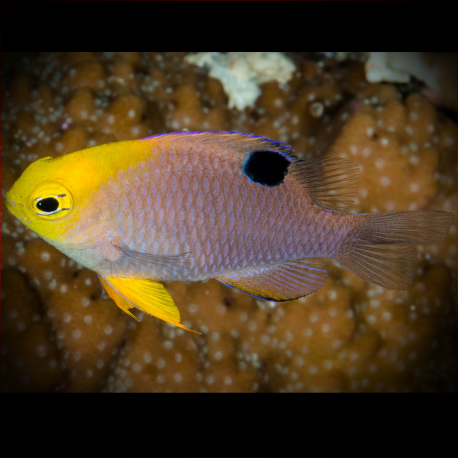More info
Datasheet
| Minimum Tank Size | 100 litres / 26.42 US gallons |
| Maximum Size | 6.0cm / 2.36inches |
| Reef Compatible | Always reef safe |
| Temperament | Might be aggressive |
| Temperature | 22.2°C / 71.96°F - 25.6°C / 78.08°F |
| Specific Gravity | 1.020-1.025 |
| Carbonate Hardness | 8-12 |
| pH | 8.1-8.4 |
General Description
Talbot's demoiselle (Chrysiptera talboti) belongs to the Pomacentridae family, known for its vibrant and colorful species. This damselfish is part of a genus that includes both peaceful and aggressive species, making it essential to monitor their behavior.
Aquarium Suitability
Chrysiptera talboti is generally suitable for most aquarium setups, but caution is advised due to its potential aggressiveness if not given sufficient space. It has hardy characteristics, making it a manageable choice for beginner aquarists.
Care and Hardiness
This species, with a maximum size of 6.0cm, is considered hardy and can thrive in a tank size of at least 100 liters. Providing ample hiding spots among live rocks is essential for their well-being.
Reef Suitability
Chrysiptera talboti is known to be reef-safe, making it a good addition to a reef tank setup. Their compatibility with reef environments adds to their appeal for marine enthusiasts aiming to create a vibrant underwater ecosystem.
Aquarium Setup
When setting up an aquarium for Chrysiptera talboti, maintaining stable water conditions with a pH range of 8.1-8.4, a temperature between 22.2-25.6°C, and a specific gravity of 1.020-1.025 is crucial. Providing a varied diet consisting of microalgae, small crustaceans, and zooplankton is recommended to ensure their nutritional needs are met.
Behaviour
The temperament of Talbot's demoiselle can lean towards aggression, particularly if they feel cramped in their environment. Monitoring their behavior and ensuring they have sufficient space and hiding places can help mitigate aggressive tendencies.
Feeding and Diet
To maintain their health and vibrancy, feeding Chrysiptera talboti a diet rich in microalgae, small crustaceans, and zooplankton is crucial. Regular feeding and a varied diet contribute to their overall well-being in a captive environment.
Habitat and Distribution
This species is native to the Western Pacific, ranging from the Andaman Sea to Fiji, and from Palau to the southern Great Barrier Reef. Its distribution highlights its natural habitat preferences and the environmental conditions it thrives in.

